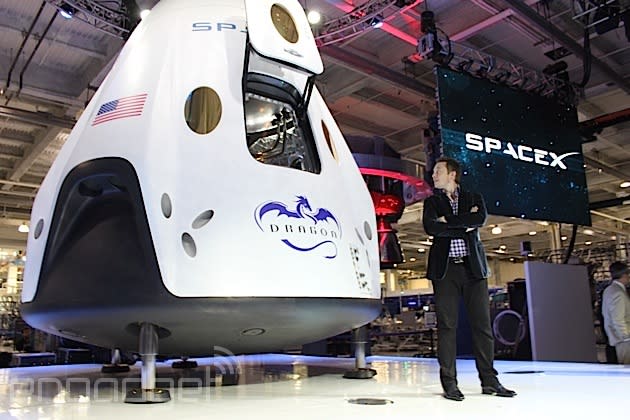Boeing and SpaceX schedule crucial safety tests ahead of ISS trips

SpaceX and Boeing spoke together in public for the first time with NASA and unveiled their plans to ferry astronauts to the International Space Station (ISS) in 2017. NASA selected the companies last September to build manned spacecraft for its Commercial Crew Program, and both have tight schedules to make. A crucial phase will be the so-called pad abort tests, which "provide astronauts a means of escaping a potentially catastrophic situation," according to NASA. Boeing will run its pad abort tests in February 2017, with an uncrewed flight test in April and a full mission with a test pilot and NASA astronaut slated for July, 2017. Meanwhile, SpaceX's pad abort test and in-flight abort test are scheduled for later this year, with a manned trip planned for 2017.
SpaceX's pad abort test will take place on a truss in Cape Canaveral, Florida, rather than an actual Falcon 9 rocket. If it works, the Dragon Capsule's thrusters will fire and carry a test dummy to safety, simulating what could happen in a launch malfunction. The following year, Dragon will be mounted to a modified Falcon 9 rocket for the in-flight tests to demonstrate its ability to abort at altitude. Boeing has yet to detail exactly how it will conduct its own tests on the CST-100 capsule.

The missions will be the first to launch humans into space from US craft since the space shuttle was decommissioned in 2011. SpaceX's Falcon 9 rocket/Dragon crew capsule, and Boeing's CST-100 capsule (strapped to a Delta V rocket) will also be the first private US vehicles to fly manned missions. They'll allow NASA to increase its crew complement on the ISS from six to seven, enabling personnel to double their research hours to 80 per week. For a more detailed dive, check the entire press conference in the video below.
